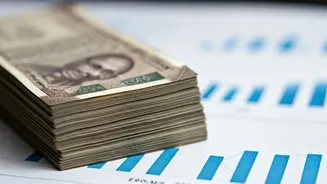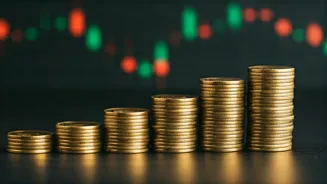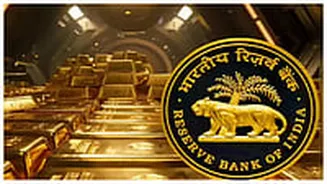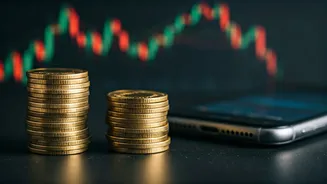Market Sentiment Unveiled
Gold's price, currently around Rs 1.21 lakh per 10 grams, is influenced by several interconnected factors. Global economic indicators play a vital role,
with events such as inflation, interest rate hikes or cuts by central banks, and geopolitical instability significantly impacting the metal's price. When economic uncertainty prevails, gold often acts as a safe-haven asset, causing its demand, and subsequently its price, to increase. Conversely, a stable economy might lead to a decrease in gold prices as investors shift towards higher-yielding assets. Furthermore, currency fluctuations, especially the strength of the dollar against the Indian rupee, also play a key role. A weaker rupee can make gold more expensive for Indian buyers, while a stronger rupee has the opposite effect. The interplay of these forces creates a complex market dynamic that constantly shifts, requiring investors to stay informed and vigilant.
Factors Affecting Gold
Several elements contribute to the fluctuations in gold prices. The state of the global economy is a significant determinant. Periods of economic downturn or financial instability often drive investors towards gold as a means of preserving wealth, pushing its prices upwards. Interest rates, set by central banks, also influence gold. Higher interest rates can make other investments, like bonds, more attractive, potentially reducing gold demand. Conversely, lower rates make gold more appealing. Geopolitical tensions, such as wars, political unrest, or trade disputes, also commonly fuel gold's demand. Investors often turn to gold during times of uncertainty, seeing it as a secure asset. Furthermore, the value of the Indian rupee against the US dollar plays a critical role. A weaker rupee raises the cost of imported gold, while a stronger rupee makes gold more affordable for Indian buyers. All of these intertwined factors contribute to the ongoing movement in gold prices.
Decoding Investment Strategies
When pondering whether to invest in gold or delay, assess your personal financial circumstances. Consider your risk tolerance, financial goals, and the time horizon of your investments. If you are risk-averse and seeking a hedge against inflation or economic uncertainty, gold can be a beneficial component of your portfolio. Evaluate the current market conditions, including interest rates, inflation rates, and geopolitical events. If there is economic uncertainty and high inflation, gold may be a good investment. Consider diversifying your portfolio. Diversification is a strategy designed to reduce risk by spreading investments across different asset classes. Gold, along with other assets like stocks, bonds, and real estate, can offer balanced returns. If gold prices have recently increased, waiting for a potential price correction might be prudent. If you have a longer investment horizon, consider investing through Systematic Investment Plans (SIPs) or lump sums, based on market conditions. Always consult with a financial advisor before making significant investment decisions, to tailor your strategy to your individual needs.
Navigating Gold Investments
There are several avenues for investing in gold, each with distinct advantages and drawbacks. Physical gold, such as gold coins or bars, offers tangible ownership, which is appealing to some investors. However, it involves storage costs and security concerns. Gold ETFs (Exchange Traded Funds) provide a convenient way to invest in gold without directly owning it. They are traded on stock exchanges and track the price of gold, providing liquidity and ease of buying and selling. Sovereign Gold Bonds (SGBs) are government-backed bonds that offer an interest rate on the invested amount, along with the benefit of gold price appreciation. They are issued by the Reserve Bank of India. Digital gold platforms allow investors to buy and sell gold online, often in small denominations, making it accessible to a wider audience. Gold mutual funds offer another way to invest, with professional fund managers managing a portfolio of gold-related investments. Each option suits different investment styles and risk appetites, so carefully evaluate these before choosing the right one for you.
Making a Final Decision
Deciding whether to buy gold at the current price of around Rs 1.21 lakh per 10 grams depends on a careful evaluation of various factors. Analyze your financial objectives, risk tolerance, and the broader economic landscape. If you're looking for a safe-haven asset to protect against economic instability, gold may be appropriate. Consider the prevailing market conditions, including inflation, interest rates, and geopolitical events, as they heavily influence gold prices. Diversify your investment portfolio to spread your risk across different assets. Monitor the gold market closely and consider consulting a financial advisor for personalized advice. By weighing these factors, you can make an informed decision on whether to invest in gold now or wait for a more advantageous opportunity. Remember that investment decisions should always align with your individual financial plan and circumstances.















